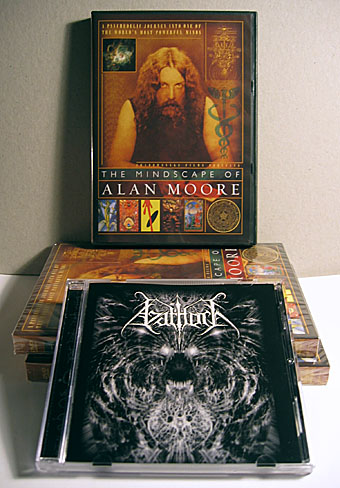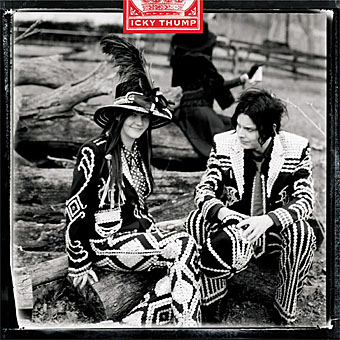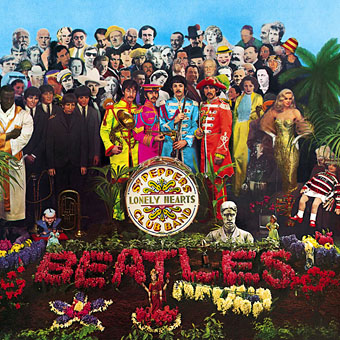The new folk festivals
Reclaiming the F-word.
Category: {music}
Music
Icky Thump by the White Stripes
New album from the ever-groovy White Stripes is released next week. And it’ll also be available as a limited set of Jack & Meg-styled USB drives containing lossless audio files. I love the style of these. Someone ought to make a set of matryoshka dolls based on them.
New things for June

New and not-so-new work-related arrivals include The Mindscape of Alan Moore DVD which finally arrived after the usual postal delays caused by bank holidays and other trivia. Those interested can order this from the Shadowsnake Films site.
And copies of the CD from metal band Azathoth turned up a few weeks ago but I’d neglected to mention this. My sole involvement was letting them use my Azathoth portrait from The Haunter of the Dark for the cover but they’ve done a nice job with the rest of the design. Their insectile name/logo fits very well with the picture.
A splendid time is guaranteed for all
It was forty years ago today, etc. Sgt Pepper was actually released on May 26th 1967 but June 1st was the official UK release date, June 2nd in the US. Love it or hate it (I love it, of course), popular music has to be divided into “before and after Sgt Pepper” such is the scope of the album’s impact. Yes, many of its vaunted innovations weren’t so unprecedented, yes Abbey Road is better musically, and so on. But it’s unlikely that any album will be so eagerly awaited by so many people, or be so influential, again.
• Song-by-song description from the band members
• Trivia page with parody covers from the Mothers to the Simpsons
• The hip-hop version
Previously on { feuilleton }
• Joe Orton
• Please Mr. Postman
• All you need is…
Love and Haight: 1967 again
Love and Haight: 1967 again
Another Summer of Love retrospective piece. Big feature, great stuff.



